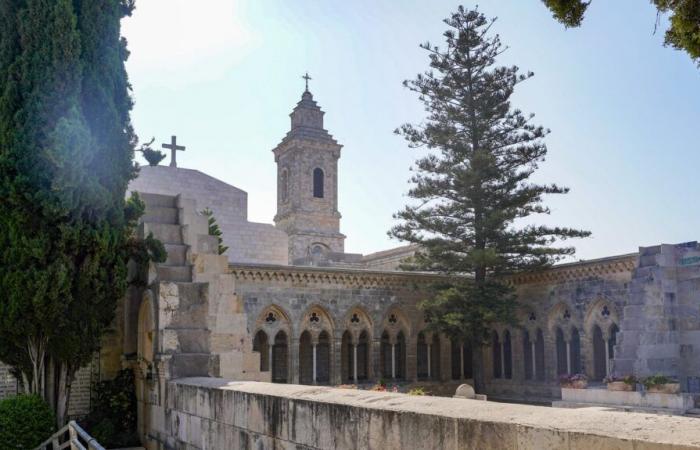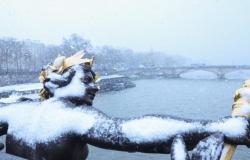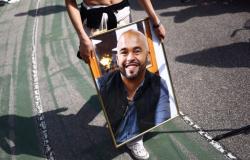A trip which turns into a diplomatic incident between France and Israel. The Israeli police entered “army” et “without authorization” in Eléona, a pilgrimage site managed by France in East Jerusalem, Thursday, November 7, as part of a trip by the Minister of Foreign Affairs, Jean-Noël Barrot. The head of French diplomacy denounced a “unacceptable situation” and refused to enter this place, while the Israeli police then briefly arrested two French gendarmes in civilian clothes. “The entry into force of Israeli security constitutes an unprecedented decision, which makes it so serious”diplomatic sources reacted to Radio France.
This official visit to Israel should be likely to cultivate ties between the two countries. In this context, the arrival of the minister in this “domain placed under the responsibility of France”, “mentioned numerous times beforehand”according to these same sources, was to be done without “no Israeli armed security (…) on the site”. “The Eléona estate (…) is an estate which not only has belonged to France for more than 150 years, but for which France ensures security, maintenance and with great care”said the minister.
The Eléona (“the olive grove” in Greek) is built on the heights of the Mount of Olives, in East Jerusalem, the Palestinian part of the city occupied by Israel since 1967. It houses a high place of the Catholic religion, “the so-called Pater cave”refuge of Christ in Jerusalem and place of teaching the prayer of the “Our Father” to the disciples, in the basement, “and above it an unfinished cloister dating from the 19th century”describes the Consulate General of France in Jerusalem.
On the pediment of the cave is engraved the Latin inscription “The cave in which the Lord taught the apostles on the Mount of Olives”which means “Cave in which the Lord taught his apostles on the Mount of Olives”specifies The Cross. On the walls of the property, you can read “Our Fathers” in all languages. The Eleona “is a holy place”summarizes Father Laurent, rector of the Sainte-Anne basilica, to AFP.
“Here in Israel, the holy places are particularly protected places. We do not enter with weapons.”
Father Laurent, rector of the Sainte-Anne basilicaà l’AFP
The site was “Prohibited access to Christians under Saladin”then was “purchased at the end of the 19th century by the Princess de la Tour d’Auvergne who had a cloister built there, made by Viollet-le-Duc, to frame the cave”traces the Consulate General. The princess gave a part “from his land to France in 1868″added The Cross. Since 1873, the Eléona site has also been home to a monastery and 12 sisters of the Carmelite religious order.
From a diplomatic point of view, Eléona is one of the four French national domains near Jerusalem, with the Tomb of the Kings, the Basilica of Saint Anne and the former crusader commandery of Abu Gosh with their Romanesque churches. According to the former French ambassador to Israel, Gérard Araud, quoted by Le Figarothis national domain is not a diplomatic hold in the same way as an embassy, that is to say a protected space prohibited to the authorities of the country where it is located. “So the right of the host country [Israël] applieshe assures on a daily basis. The objection we might make is that we do not recognize Israeli sovereignty over East Jerusalem. But, in fact, we respected it.”
Concerning the other areas, the Tomb of Kings is in fact the tomb of Princess Hélène of Adiabene (Kurdistan), assures the Consulate General of France in Jerusalem. The site was excavated in 1863 by French archaeologists and acquired by the Péreire brothers, famous bankers of the Second Empire, who gave it to France in 1886.
Abou Gosh, located in West Jerusalem, is an ancient commandery built in the 12th century by the knights of Saint John the Hospitaller and abandoned to Muslims in 1187, reports the Consulate General. It was then given to France by the Ottoman Empire and has housed a community of nuns since 1976. Finally, the Basilica of Saint Anne, also built in the 12th century and located inside the walls of Jerusalem, is considered to be the site “from the house of the parents of the Virgin Mary and the pool of Bethesda where, according to the gospels, Christ healed a paralytic”details the same source. It was offered to Napoleon III in 1856 and restored by the French government, after the damage that occurred during the Six Day War in 1967.
It was in this basilica, on January 22, 2022, that Emmanuel Macron’s visit was marked by a stampede. The president had said in English to an Israeli police officer “I don’t like what you did in front of me” (“I don’t like what you did in front of me.”). But the most famous incident remains that of 1996. Jacques Chirac, then President of the Republic, lost his temper against Israeli soldiers who were surrounding him too closely by launching the famous “Do you want me to go back to my plane ?” (“Do you want me to get back on my plane?”), before demanding that the soldiers leave the Sainte-Anne domain.






